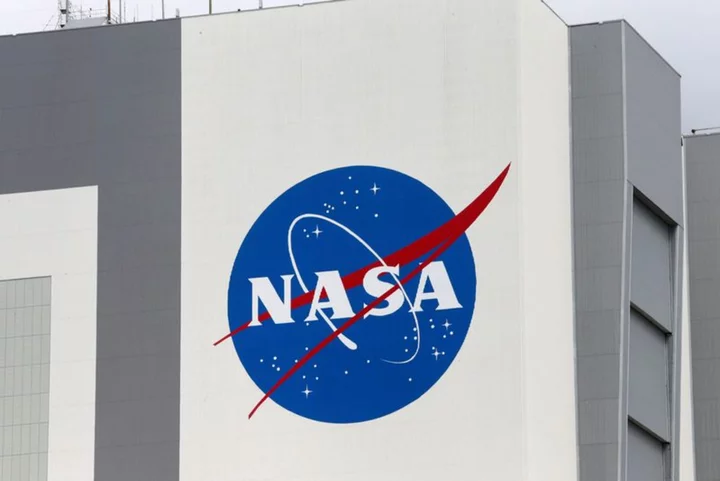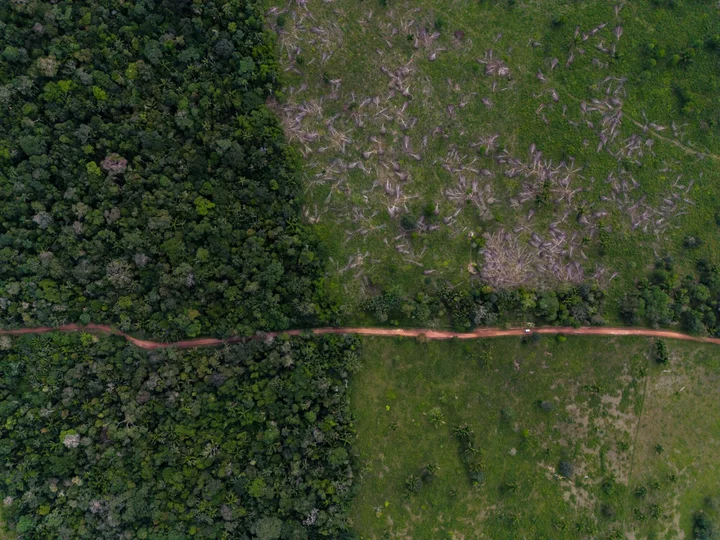By Steve Gorman
NASA was due on Friday to launch a spacecraft from Florida on its way to Psyche, a distant, metal-rich asteroid that is the solar system's largest-known metallic object and is thought to be the remnant core of an ancient protoplanet.
The Psyche probe, folded inside the cargo bay of a SpaceX Falcon Heavy rocket, was slated for blastoff at 10:19 a.m. EDT (1419 GMT) from NASA's Kennedy Space Center in Cape Canaveral on a planned journey 2.2 billion miles (3.5 billion km) through space.
Propelled by a system of solar-electric ion thrusters being used for the first time on an interplanetary mission, the spacecraft - about the size of a small van - is expected to reach its target on the outer fringes of the main asteroid belt between Mars and Jupiter nearly six years from now.
It would then orbit Psyche for 26 months, scanning the asteroid with instruments built to measure the asteroid's gravity, magnetic proprieties and composition. Psyche measures roughly 173 miles (279 km) across at its widest point.
The leading hypothesis for this asteroid's origin is that Psyche is the once-molten, long-frozen inner hulk of a baby planet torn apart by collisions with other celestial bodies at the dawn of the solar system. It orbits the sun about three times farther than Earth, even at its closest to our planet.
Psyche is due to become the first asteroid of its kind ever studied at close range by spacecraft. It is believed to consist largely of iron, nickel, gold and other metals whose collective hypothetical monetary value has been placed at 10 quadrillion dollars.
But the Psyche mission has nothing to do with space mining, according to scientists. Its objective is to gain insight into the formation of Earth and other rocky planets that are built around cores of molten metal.
Earth's hidden molten center is too deep and too hot to ever be examined directly.
"So we say, tongue-in-cheek, that we're going to outer space to explore inner space," Lindy Elkins-Tanton, Psyche's principal investigator for NASA's mission partner Arizona State University, told a briefing for reporters on Tuesday.
One of the spacecraft's primary instruments is a spectrometer to measure molecular signatures of gamma rays and neutrons emitted from the asteroid's atoms as it is bombarded by cosmic radiation from the sun, allowing scientists to map Psyche's iron composition.
Psyche, discovered in 1852 and named for the goddess of the soul in Greek mythology, is the largest of only about nine known asteroids that appear from ground-based radar observations to consist largely of metal, with rocky material mixed in. Still, scientists can only guess at what it looks like, Elkins-Tanton said.
The Psyche orbiter will be released from the SpaceX rocket's cargo bay about five minutes after launch, and take two hours to unfurl its twin solar arrays and point its communications antennae toward Earth, if all goes as planned.
The mission control team will spend three to four months checking out the spacecraft's systems, then ignite its thrusters for its journey into deep space. Psyche is expected to reach Mars in May 2026 for a gravity assist intended to boost its momentum and put its trajectory on course for the asteroid belt.
The spacecraft is scheduled to arrive at Psyche in August 2029, then circle the asteroid from a series of gradually lower orbits, ending up a mere 40 miles (64 km) off its surface before ending the mission in November 2031.
Other spaceflight milestones in store for the Psyche mission include a ride-along technology demonstration testing a laser-based communication to send high-bandwidth data to Earth from beyond the moon for the first time.
It also marks the first dedicated NASA launch on a Falcon Heavy rocket furnished by Elon Musk's SpaceX company, and the first interplanetary mission ever flown by the Falcon Heavy.
The launch comes two weeks after NASA accomplished a return to Earth of the largest sample of material ever collected from the surface of an asteroid, in this case a much smaller, rocky near-Earth asteroid named Bennu.
As for the notion of extracting the wealth of metals thought to be embedded in Psyche and toting them back to Earth, Elkins-Tanton said space science possesses "zero technology" for such an endeavor.
Even if it were possible to bring the asteroid back to Earth, Elkins-Tanton hastened to add: "It would flood the metals market and it would literally be worth nothing."
(Reporting by Steve Gorman in Los Angeles; Editing by Will Dunham)









